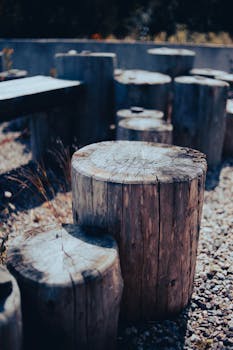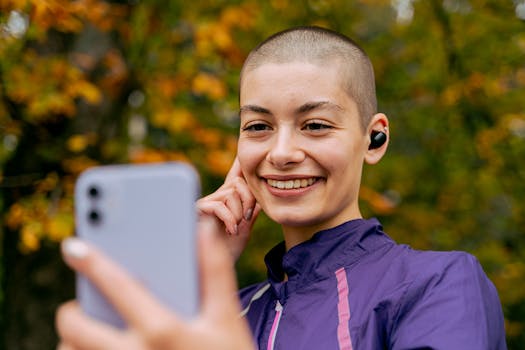Over the past decade, social media has profoundly influenced various aspects of life, including outdoor activities. Platforms like Instagram, Facebook, and Twitter have transformed how individuals interact with nature and outdoor spaces. The visual and social elements of these platforms have created a vibrant community centered around outdoor experiences.
Outdoor enthusiasts now share their adventures online, inspiring others to explore the natural world. These social media narratives often highlight the beauty of hiking trails, national parks, and other outdoor destinations. Consequently, this digital sharing fuels a greater interest in outdoor activities among a broader audience.
As a result of social media’s reach, businesses are also adapting their marketing strategies to tap into the growing enthusiasm for outdoor recreation. This article explores the multifaceted impact of social media on outdoor experiences, including community building, environmental advocacy, and outdoor tourism enhancement.
Building Communities Through Shared Experiences
Social media platforms have become vital in fostering communities centered on outdoor interests. Users connect over shared passions, forming groups dedicated to hiking, camping, climbing, and more. This sense of belonging encourages individuals to participate in outdoor activities.
Furthermore, these online communities share tips, advice, and personal stories. People can find inspiration from others’ journeys, making them more likely to venture outdoors themselves. The power of storytelling captivates audiences and can convert even the most reluctant individuals into outdoor enthusiasts.
Events such as group hikes or clean-up efforts are often organized through social media. Participants can easily communicate, share plans, and rally support for their causes. This collective effort fosters environmental stewardship and encourages everyone to contribute to nature’s preservation.
In addition, social media has made it easier to find local outdoor clubs and activities. Many groups utilize Facebook events or Instagram stories to promote their happenings. This accessibility broadens the reach of outdoor activities, attracting newcomers keen to join the fun.
Ultimately, the community aspect created by social media enriches people’s lives, enhancing their connection to nature and encouraging outdoor participation across diverse demographics.
Inspiring Adventure Through Visual Content
The visual nature of platforms like Instagram makes them a powerful tool for promoting outdoor adventures. Eye-catching images of breathtaking landscapes or thrilling outdoor activities can ignite curiosity. This phenomenon drives people to seek out similar experiences in their lives.
Social media influencers play an essential role in showcasing outdoor adventures. Their curated content inspires followers to explore new terrains, whether it be the mountains, forests, or beaches. This influence often translates into increased foot traffic to various outdoor locations.
Photography competitions and hashtags also elevate awareness and excitement about beautiful outdoor destinations. Users share their best shots, which helps to promote lesser-known locations and encourages exploration beyond popular tourist spots. As a result, social media broadens exposure of various natural spaces.
Moreover, visual content on social media inspires travel planning. When individuals come across stunning photographs, they often share destinations with friends or save them for future trips. Such images create a ripple effect, encouraging more people to embrace outdoor adventures.
The beauty of storytelling through visuals is that it captivates diverse audiences, making outdoor exploration appealing to a wider range of individuals, including those who may not have previously considered it.
Boosting Outdoor Tourism
With the rise of social media, the outdoor tourism industry has experienced notable growth. Travelers seek unique experiences in nature, often fueled by social media content. Local businesses benefit when outdoor activities become popular through viral trends.
Social media marketing enables tourism boards to reach broader audiences. Regions can showcase their beautiful hiking trails, ski resorts, or national parks through engaging content. This exposure helps attract visitors who might not otherwise consider these destinations.
Additionally, user-generated content serves as valuable marketing material. Photographs and reviews shared by visitors provide authentic insights into outdoor experiences. This organic promotion builds trust among potential tourists seeking reliable information before making travel decisions.
Furthermore, emerging trends like “Instagrammable spots” create unique opportunities for businesses. Establishments near popular outdoor destinations thrive as travelers flock to these areas for picturesque backdrop photos. This trend encourages local economies to grow and diversify their services.
In summary, social media effectively amplifies outdoor tourism, generating excitement and interest. With the right strategies, regions and businesses can harness this momentum to enhance their local economies.
Promoting Environmental Awareness
Social media is an influential medium for environmental advocacy, particularly regarding outdoor spaces. Users often share information about keeping nature clean and protecting wildlife. This awareness fosters a sense of responsibility among outdoor enthusiasts.
Campaigns promoting outdoor conservation efforts often gain traction on social media. Hashtags and challenges encourage people to join initiatives, such as trail clean-ups or wildlife protection. Engagement in these activities demonstrates the power of a united community.
Moreover, educating individuals about the impact of human activities on the environment is crucial. Social media provides a platform for organizations to share vital information needed to foster understanding. People are more likely to respect and protect the environment when they know the consequences of their actions.
Influencers and activists leverage their platforms to raise awareness about endangered species or habitats at risk. Such conversations encourage users to advocate for policies that protect natural spaces and contribute to preservation fund initiatives.
Ultimately, social media ignites passion for environmental stewardship within outdoor communities. By raising awareness and promoting eco-friendly practices, individuals become proactive participants in preserving nature for future generations.
The Role of Adventure Challenges
Adventure challenges promoted through social media provide exciting ways for outdoor enthusiasts to engage with nature. Many individuals participate in activities that push their boundaries, such as hiking a certain number of miles or climbing specific peaks. These challenges help build excitement and camaraderie.
Custom hashtags accompany many adventure challenges, allowing participants to connect with one another. Sharing progress through posts and stories encourages individuals to stay motivated while fostering a sense of accountability.
Outdoor brands often leverage adventure challenges to promote their products or services. These collaborations create a platform for companies to inspire individuals to engage with nature while supporting their brand values. This trend strengthens brand loyalty among outdoor enthusiasts.
Additionally, community-focused challenges often generate funds for local initiatives or charities. While having fun, participants contribute to causes that benefit the very areas they explore, creating a win-win scenario for everyone involved.
In conclusion, adventure challenges enhance engagement and promote a more active outdoor lifestyle. Social media has amplified this trend, creating a community that thrives on shared experiences and meaningful connections.
Challenges of Social Media in the Outdoor Space
Despite the many benefits social media brings to outdoor pursuits, there are challenges to be mindful of. The “overcrowding” effect often occurs when a location gains media attention, leading to environmental degradation. This phenomenon can harm the very spaces enthusiasts seek to enjoy.
Moreover, unrealistic portrayals of outdoor experiences can lead to feelings of inadequacy among followers. When individuals compare their adventures to others, they might feel pressured to seek out more extreme experiences or locations, diminishing their enjoyment of nature.
Additionally, safety becomes a concern when users share information without verifying its accuracy. Inaccurate trail conditions or weather updates can endanger individuals who take unnecessary risks based on what they see online. Education about safety is essential for responsible outdoor engagement.
Another challenge arises from the commercialization of outdoor spaces, where social media-driven trends lead to the exploitation of natural areas for profit. This commercialization can ultimately conflict with the values of preservation and respect for nature.
In summary, while social media has significantly influenced outdoor engagement, users must acknowledge and address its potential challenges to ensure the continued enjoyment and preservation of nature.
Conclusion
The impact of social media on outdoor activities is profound and multi-dimensional. From building communities to promoting environmental awareness, social media enriches the experiences of outdoor enthusiasts. It has the power to inspire individuals to explore nature while also educating them on the importance of protecting these spaces.
Despite facing challenges such as overcrowding and commercialization, the positive aspects of social media far outweigh the negatives. With mindful engagement, users can foster a culture of respect and appreciation for the great outdoors.
As individuals continue to connect and inspire one another through their shared experiences, the outdoors will remain a beloved refuge for generations to come.
Communities built around outdoor activities will continue to thrive, and social media will play an integral role in encouraging both adventure and environmental stewardship.


